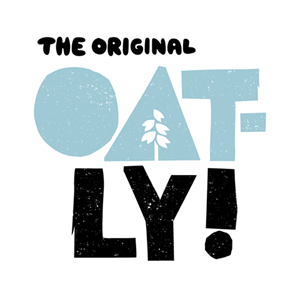COP27: Leaders Look To Food, But Remain Skeptical Initiatives Will See Action

Oatly, Impossible Foods and The Every Company have created portfolios of plant-based products, each with their own approach to creating more sustainable food than what is generated by the industrial food system. At the 27th Conference of Parties (COP27) in El-Sharm Sheikh, Egypt this past week, these food industry leaders, among others, have argued for a focus on equity, transparency, nutrition and low impact food and aimed to spur collective action toward those goals.
On Saturday, the conference turned its full attention to agriculture and the food system while a group of environmentalists, women, indigenous, youth and trade union organizations led protests, a practice that is illegal in Egypt, outside the doors. The primary grievance connecting those protesting and those facilitating conversations inside was that the action toward agreed-upon issues, and their corresponding initiatives, has not been not enough.
What’s happened so far?
Ahead of Agriculture Day, 14 global food processors and suppliers including Cargill, Archer Daniels Midland (ADM) and JBS, among others, announced a plan to eliminate deforestation from their soy, beef and palm oil supply chains by 2025.
Earlier today, leaders from Brazil, Indonesia and The Democratic Republic of Congo (DRC) presented an anticipated, united front against the deforestation of rainforests and signed an agreement that calls on the international community to compensate their countries for efforts aimed at reducing the destruction of the Amazon (Brazil), Sumatra (Indonesia) and The Congo Rainforest (DRC). The joint decree highlights access to climate financing and the lucrative carbon credit system as justification for why payments are feasible and necessary.
In the midst of Agriculture Day, the World Health Organization along with COP leaders, launched the Initiative on Climate Action and Nutrition (I-CAN) which marries a variety of global agricultural adaptation strategies, in order to create more nutrient-dense food and an overall resilient food system. The initiative emphasizes that collaboration and collective action, the adoption of policy changes and the sharing of strategies, data and knowledge will be needed to implement and support the initiative’s goal.
During a panel on decarbonizing the food system, Nestle presented its previously announced model to transition its supply chain to regenerative practices as an example of how companies can “move fast” on emission reduction. Mexico, one of the top 10 agriculture-driven economies in the world, also upped its carbon emissions reduction pledge with a promise to cut output 35% by 2030, an increase of 10%. The announcement makes Mexico one of the only countries to raise its commitment at the conference thus far.
The Rockefeller Foundation, which sponsored the Food System Pavillion and associated events, announced over $11 million in grants to be allocated to ten organizations committed to scaling Indigenous and regenerative agriculture practices. The flagship grant went to the Meridian Institute’s Regen10, a global coalition aiming to outline how to produce half of the world’s food in ways that benefit people, nature, and climate by 2030. Additional recipients ranged from community-oriented NGOs to regenerative agriculture-focused research and tech organizations.
“Continuing to rely solely on conventional approaches cannot generate the profound shifts needed to improve food systems,” said Roy Steiner, SVP for the Food Initiative at the Rockefeller Foundation, in a statement. “The integration of traditional knowledge with other scientific and technological knowledge can transform food systems to be more resilient, nutritious, and equitable.”

What’s the debate?
The initiatives presented at COP27 detail the leading grievances and goals international actors have identified surrounding climate change mitigation. However, the action plans presented have revealed a divide in how leaders believe the international community should go about solving these issues.
For example, the agenda focuses heavily on supporting and modernizing current industrial agricultural systems by expanding the carbon credit market rather than funding initiatives that help reduce emission outputs. The growth of the carbon market, which relies heavily on land-sector use, has also come under fire for causing territorial disputes over indigenous land.
“The industrial food system is a major culprit driving climate change but is still not being taken seriously by these climate talks,” said Million Belay, IPES-Food panel expert and coordinator of the Alliance for Food Sovereignty in Africa, in a statement. “Real solutions like diverse resilient agroecological farming are crucial for farmers to adapt to climate chaos, but they are being sidelined and starved of climate finance. Africa’s small-scale farmers impacted by droughts and floods have answers, but they need support, they must not be left to their own fate.”
Another source of debate has revolved around the timeline for solutions, with some entities alleging that companies are focusing too far on the future at the expense of short term scalable solutions. Private sector corporations have looked to novel technologies like lab-grown protein and indoor, vertical farming operations as a way to mitigate climate effects, but others argue this plan is focused too much on technologies that are billions of dollars of investment away from a point of scale where they will be accessible to the majority of the world. Even if that is achieved, cultivated protein is not enough to facilitate the comprehensive food system transition necessary to create a new, resilient model meaning multiple novel solutions across various sectors must also be supported and funded.
In some ways both issues get at the same question of long-term systematic changes vs nearer term renovation of the food system, and which should be prioritized.In order to achieve any progress, leaders must now find a balance that draws from both current and novel solutions, to pursue its goal of reducing emissions, without compromising the food supply.
“We’re all working in silos, in parallel, instead of actually working together,” said Dr. Lee Recht, VP of Sustainability at Aleph Farms, during a Agriculture Day panel discussion.
What’s next?
One of the most contested topics at the conference is loss and damages. That is, should wealthier nations, like the U.S. and China, be required to pay financial reparations to developing countries, in order to offset the impact of climate change-driven, extreme weather patterns that have already occurred. This includes accounting for lost crops and lower yields, decreased nutrition due to over-farming and destroyed infrastructure.
According to the UN, small-scale farmers in developing countries currently produce one-third of the global food supply, yet they only receive 1.7% of climate finance.
The majority of the new climate finance, relative to the food system, is expected to come from the private sector. However, the government still plays a role in encouraging, or discouraging, how this capital is spent. For example, In the U.S., subsidies are what keep the price of animal meat relatively low and are a determining factor in what food is produced, and how it is made, globally. In fact, according to UN research, 90% of the $540 billion in food system subsidies on a global scale have been found to use practices harmful to the planet
Some groups called for public sector support around regenerative agriculture to encourage companies to invest further efforts in the farming movement rather than simply scaling novel technologies or fueling the carbon credit market.
Organizations like the Global Alliance for the Future of Food are calling for subsidized regenerative farming and financial support for indigenous and small-scale operations to free farmers from the industrialized system they are currently “locked into.” Last week, Agriconomie, a European-based platform for farmers, announced it raised $62.17 million to continue scaling its online services, which include sharing information about sustainable, regenerative farming practices.
However, plans for implementation on the Koronivia Joint Work on Agriculture program (KJWA), a framework that would incentivize a global transition to regenerative agriculture, were largely missing from the Agriculture Day’s resolutions. Members of COP27’s Food Systems pavilion, which includes trade organizations like The Good Food Institute, are calling for KJWA to become a part of the final written text from this year’s COP and added urgency to the matter by stating “We know this work is critical…this cannot be another failed attempt to drive action on food.”
“The current crises show we should be focusing on the one vision that is regenerative, and do away with the system that is destructive and exploitative,” said Edie Mukiibi, IPES Food System expert, in a statement. “While the industrial crop and livestock production system focuses on taking away all forms of life from the planet, the agroecological approach to production aims at bringing back diversity and bringing back life to the planet.”



















